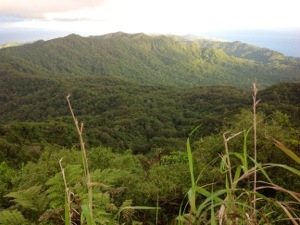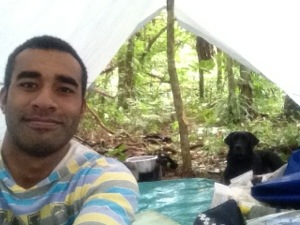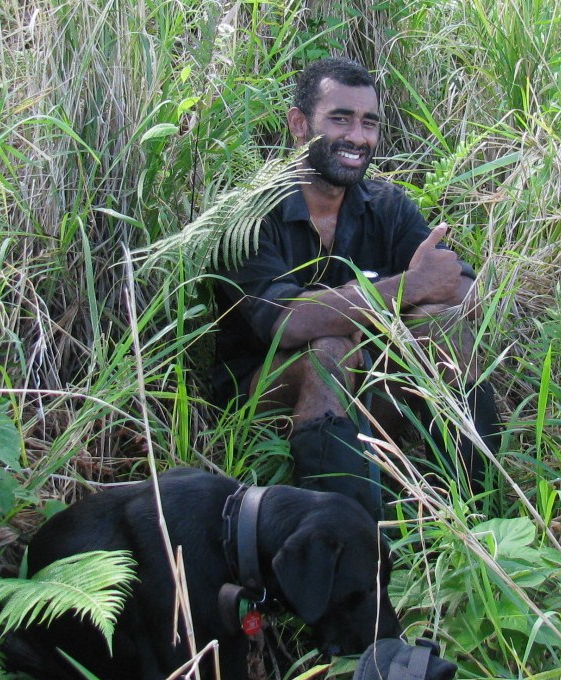Gau Island, a tropical paradise in the Fiji archipelago lying about 80 km to the East of Fiji’s capital city Suva, is home to one of the world’s rarest sea-bird’s known as the ‘Fiji Petrel’ or ‘Kacau ni Gau’. Its numbers are staggeringly low at an estimated 30 -50 remaining pairs and this number is dwindling because introduced predators have been preying on nesting birds. Petrels are particularly vulnerable to feral cats, rats and feral pigs because although they are pelagic seabirds, they nest in the ground in burrows.

A view of the hinterlands of Gau looking South from the highest point on the island ( Mt Delaco)
The dilemma surrounding the Fiji petrel as a species is, nothing can be done to preserve & restore its population until its breeding grounds are found. The cliche ‘if it was easy, someone would have done it’ takes on dimension here, because in fact as noble as the cause is the task is a mammoth one. Searching for any petrel nest in the hinterlands of Gau is like looking for needles in haystacks. Searching involves following wildlife search dogs through thick tropical rain forests, camping four days a week, hiking for hours up cloud forest peaks every week and visiting countless gullies and ridges over and over again.
Over the past thirty years, search efforts of varying intensity have been carried out to find the nesting grounds of this ‘Critically Endangered’ bird, but none has been successful thus far. This round of search efforts is different because this has been one where there has been enough resources to carry out continuos full-scale work and this time we have the help of two specially trained canine friends or as they a technically known, ‘wildlife search dogs’, Bob and Tar.
For the past year Eleazar O’Connor (author/ dog handler), Poasa Qalo (Gau Islander/ trained dog handler), Bob (male lab/pointer cross) and Tar (female lab/ border collie cross) have been systematically covering sections at a time of the hinterlands of Gau Island in search for the Fiji Petrel and have covered much ground. Thus far over a period of nine months of searching with the dogs we have achieved more in terms of finding burrows than previous combined human only efforts searching for nest burrows of petrels on Gau. Previous records show that no more than five burrows of a more abundant second species known as the collared petrel which also nests on Gau have been found. And over the past five years only one collared petrel nest has been found but was done so accidentally by a villager digging for wild yams. In contrast with the help of Bob and Tar the number of collared petrel burrows that have been found stands at 42 in only nine months of searching. To find that many on Gau is amazing!
It makes perfect sense to begin finding burrows of a more abundant species before the more rare Fijian Petrel. Thanks to NatureFiji-MareqetiViti, the field team on Gau and the perseverance of Dr Dick Watling in championing the cause to rescue the Fiji Petrel, there is hope that the species will survive.
Stay tuned to this blog to follow how searches have been going with the dogs.

Eleazar O’Connor and Bob in the background in a fly camp during dog searches

